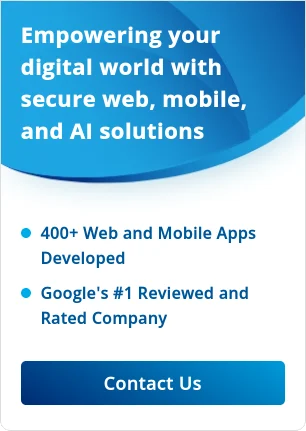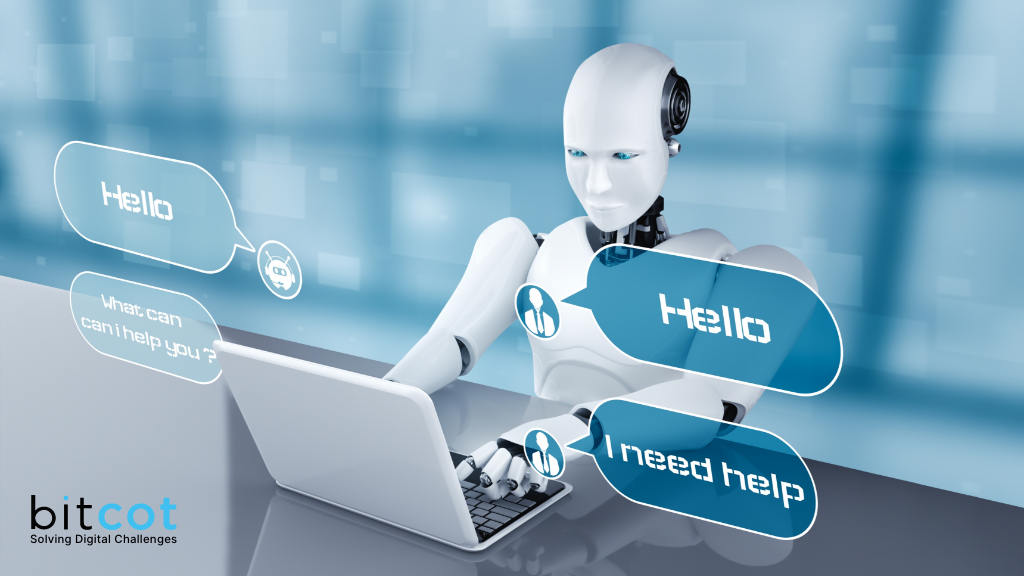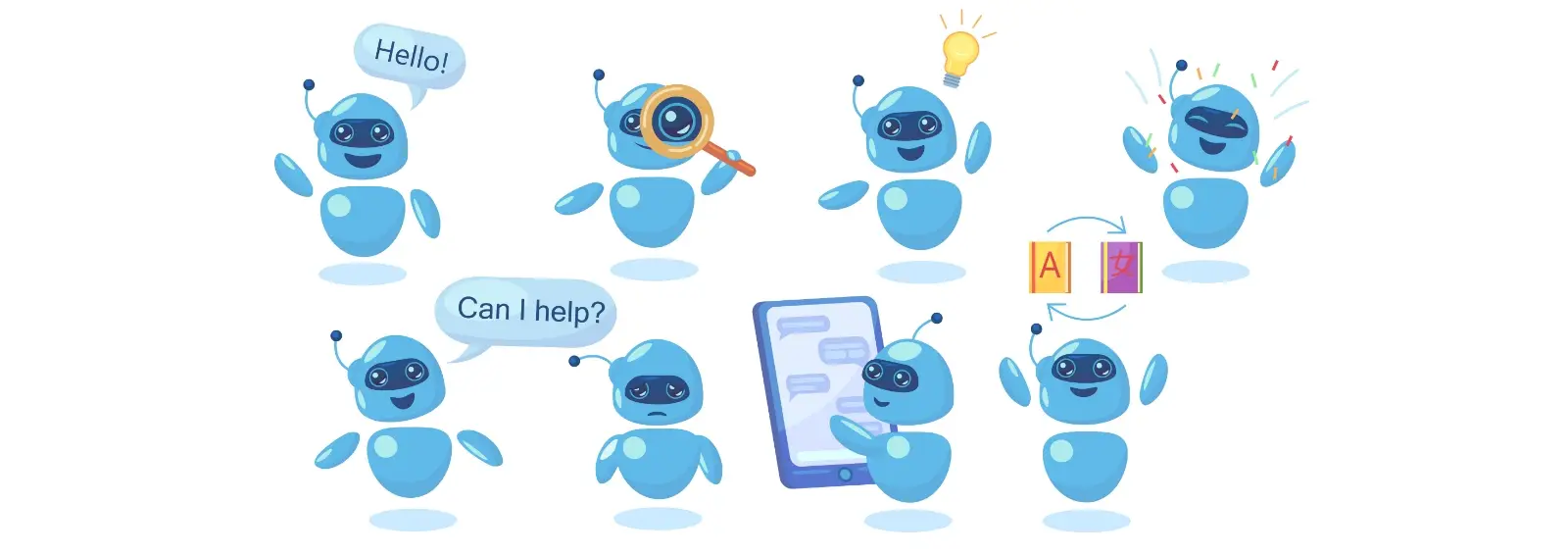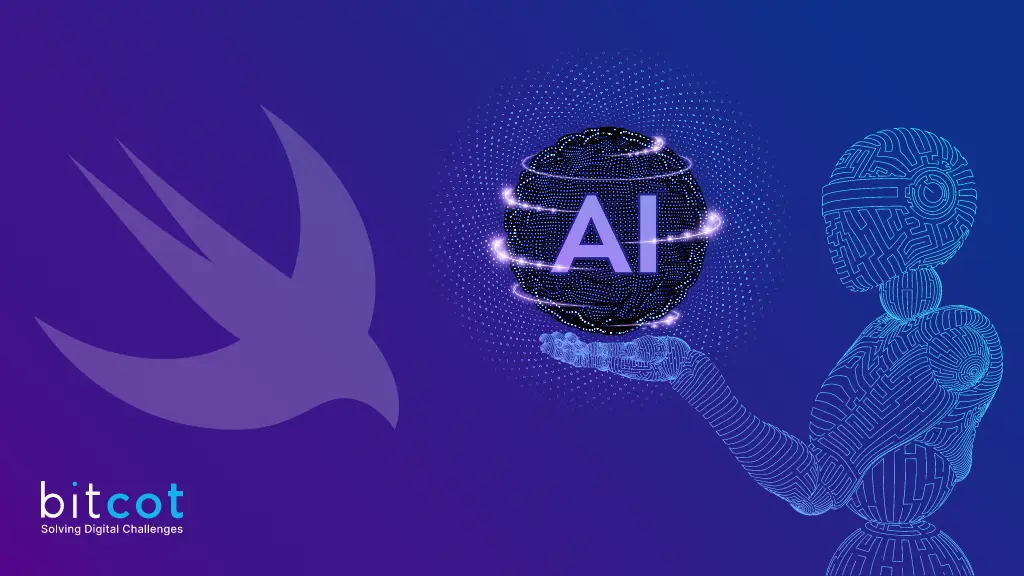
In this fast-paced era of technological advancements, one can observe the growing prominence of machine learning and artificial intelligence (AI). These two domains, once considered distinct, have now joined forces to revolutionize various industries and improve the quality of everyday life. One framework that has emerged as a powerful tool in this realm is Machine Learning Swift. In this article, we will explore how Machine Learning Swift is reshaping the landscape of AI and ML, and delve into its potential applications and benefits.
What is Machine Learning?
Machine learning is a branch of artificial intelligence (AI) and computer science which focuses on the use of data and algorithms to imitate the way that humans .
- Core ML is Apple’s Machine learning framework.
- It was first introduced in iOS 11.
- Used to integrate trained ML model into your app.
- iOS, MacOs, tvOS and watchOs
Types of Model
- Supervised
- Semi – supervised
- Unsupervised
- Reinforcement
Understanding Machine Learning Swift
- Swift, primarily known as a popular programming language for developing iOS apps, has expanded its horizon beyond conventional mobile development. Machine Learning Swift is an extension of Swift that integrates machine learning frameworks, enabling developers to create intelligent and predictive applications.
- By leveraging Swift’s simplicity, expressiveness, and advanced features, ML Swift empowers developers to easily implement and experiment with various machine learning algorithms, models, and techniques.
- This framework’s robustness and versatility have made it a preferred choice among developers, enabling them to develop ML-powered applications with ease.
Applications of Machine Learning Swift
Machine Learning Swift is gaining traction in a wide range of domains. Let’s explore some key applications where this powerful combination of machine learning and Swift is making a difference:
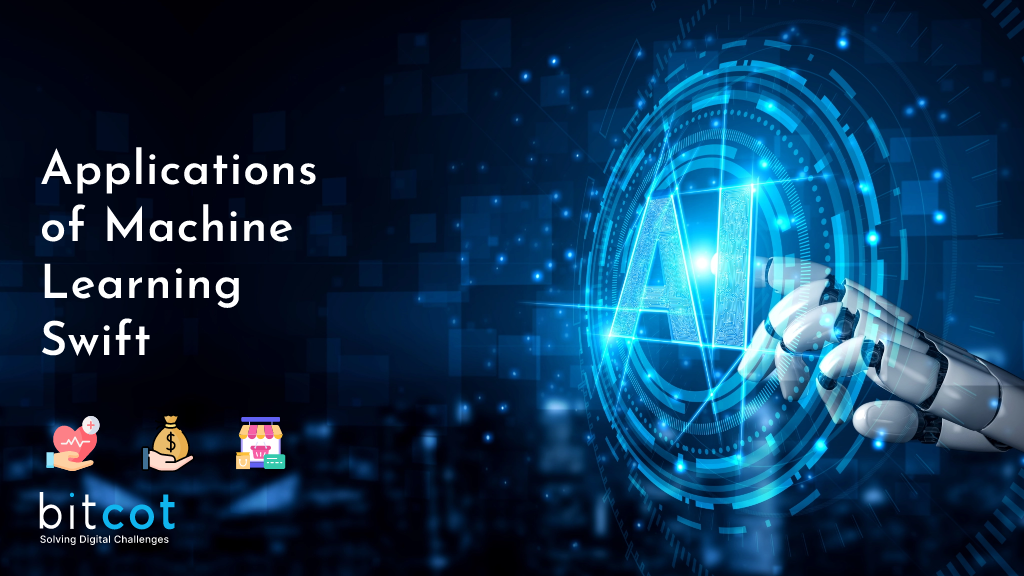
1. Healthcare
- Machine Learning Swift is revolutionizing the healthcare industry by offering promising solutions for disease diagnosis, drug discovery, and personalized treatment plans.
- By training ML models with vast amounts of patient data, healthcare professionals can uncover patterns, predict disease progression, and assist in early detection, ultimately saving lives.
- Swift’s simplicity and expressive syntax make it easier for medical professionals and researchers to develop applications that leverage complex ML algorithms without needing extensive coding expertise.
2. Finance
- Financial institutions are rapidly adopting Machine Learning Swift to enhance fraud detection, portfolio management, and risk assessment.
- With ML Swift, banks can accurately analyze historic transaction patterns, identify anomalies, and prevent fraudulent activities in real-time.
- Furthermore, this technology enables traders to make data-driven investment decisions and build predictive models for market forecasting, enhancing overall financial performance.
3. Retail and E-commerce
- Machine Learning Swift is transforming the retail industry by enabling businesses to improve their customer experience, optimize supply chains, and personalize marketing strategies.
- By analyzing customer preferences, browsing patterns, and historical purchase data, ML Swift helps businesses provide personalized recommendations, enhancing customer satisfaction and loyalty.
- Additionally, Swift’s conciseness and readability facilitate the development of inventory management systems that leverage ML algorithms to minimize stockouts, reduce excess inventory, and streamline logistics processes.
Apple Uses Machine Learning
- Photos app (People detection)
- Keyboard (Next word prediction)
- Apple watches (Handwriting detection, Heart rate)
How to get a ML Model
- Existing Pre-trained Core ML models (models with .mImodel file extension)
- Pre-trained Open source models + Convert -> CoreML Model
- Collect data + Train using CreateML framework -> CoreML Model
- Collect data + Train using open source + Convert -> CoreML Model
How to add Core ML Model in Swift ?
- Visit Apple’s official website: Go to the official Apple website at https://developer.apple.com/machine-learning/.
- Navigate to the “Developers” section: Look for a “Developers” or “Developer” link or section on Apple’s website. This is where you’ll likely find resources for developers, including machine learning tools and models.
- Search for machine learning resources: Use the search function on the developer portal to search for machine learning-related resources, models, or tools. You can enter keywords like “machine learning,” “Core ML,” or specific model names you’re interested in.
- Explore available resources: Browse through the developer documentation, downloads, and any other relevant sections to find the specific machine learning models or resources you need.
- Download the model: If the model you’re looking for is available for download, you should be able to find a download link or instructions on how to access it.
Image Picker ML(Inceptionv3)
Added this functionallity for Image Recognition it will Predict the image and return the response
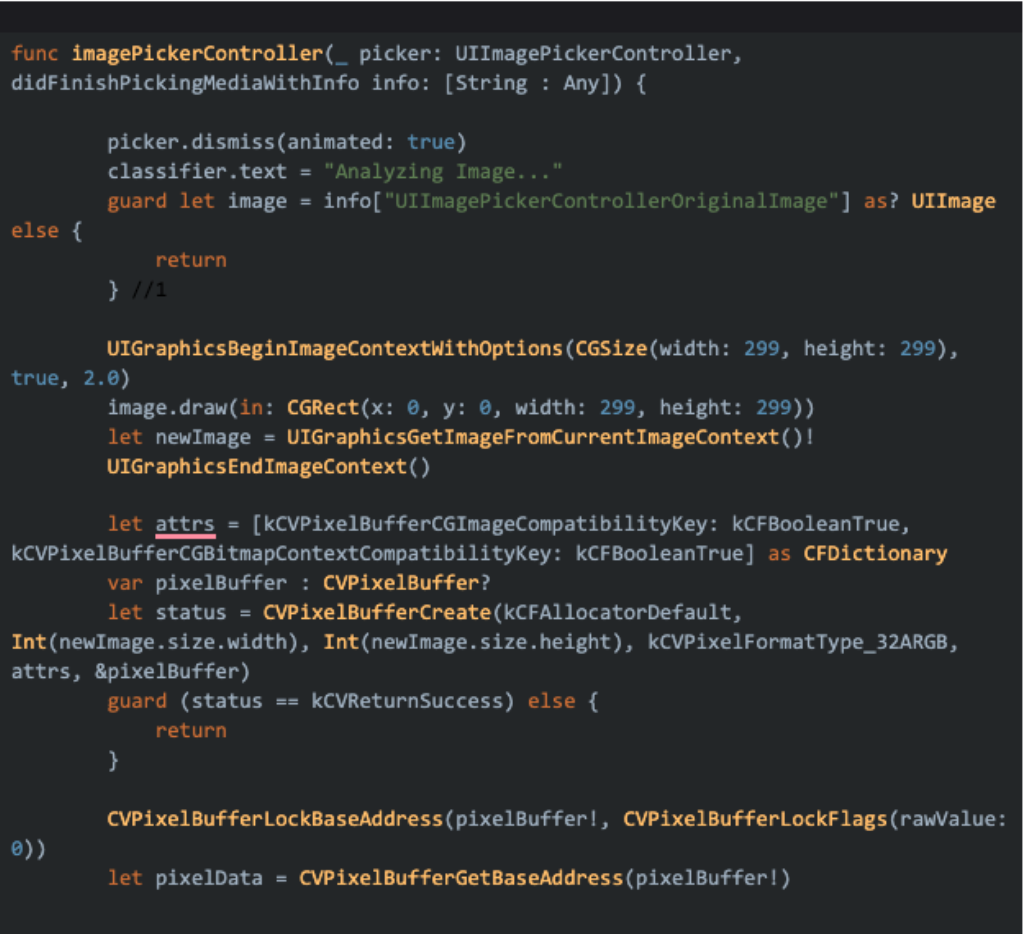
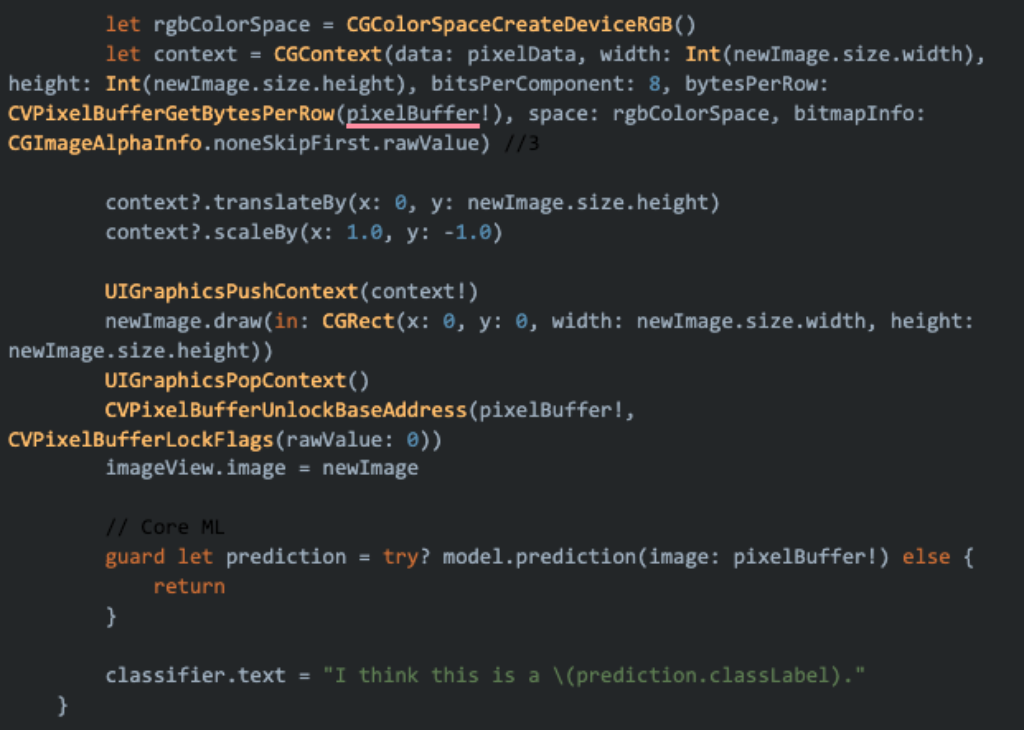
Live Video Prediction(Resnet50 ML)
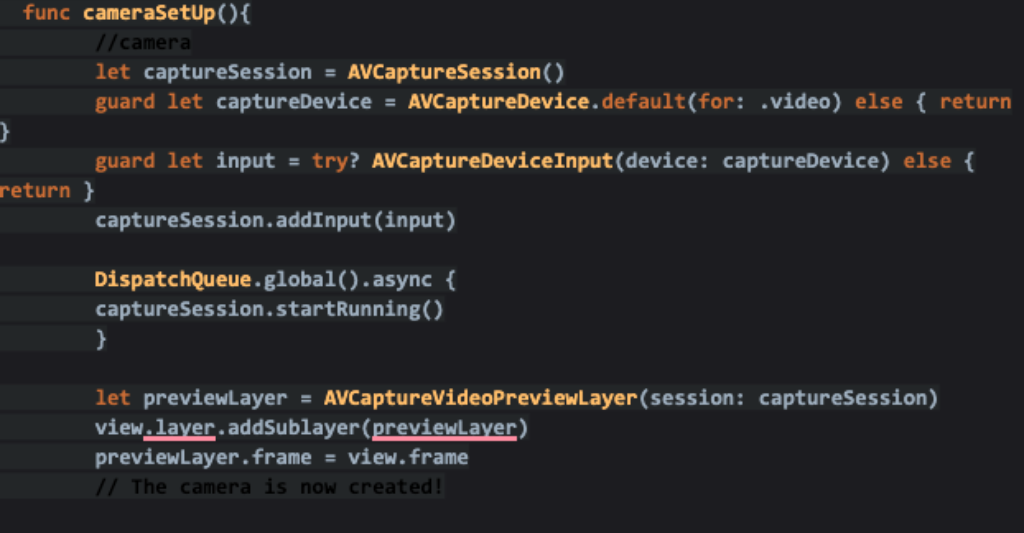
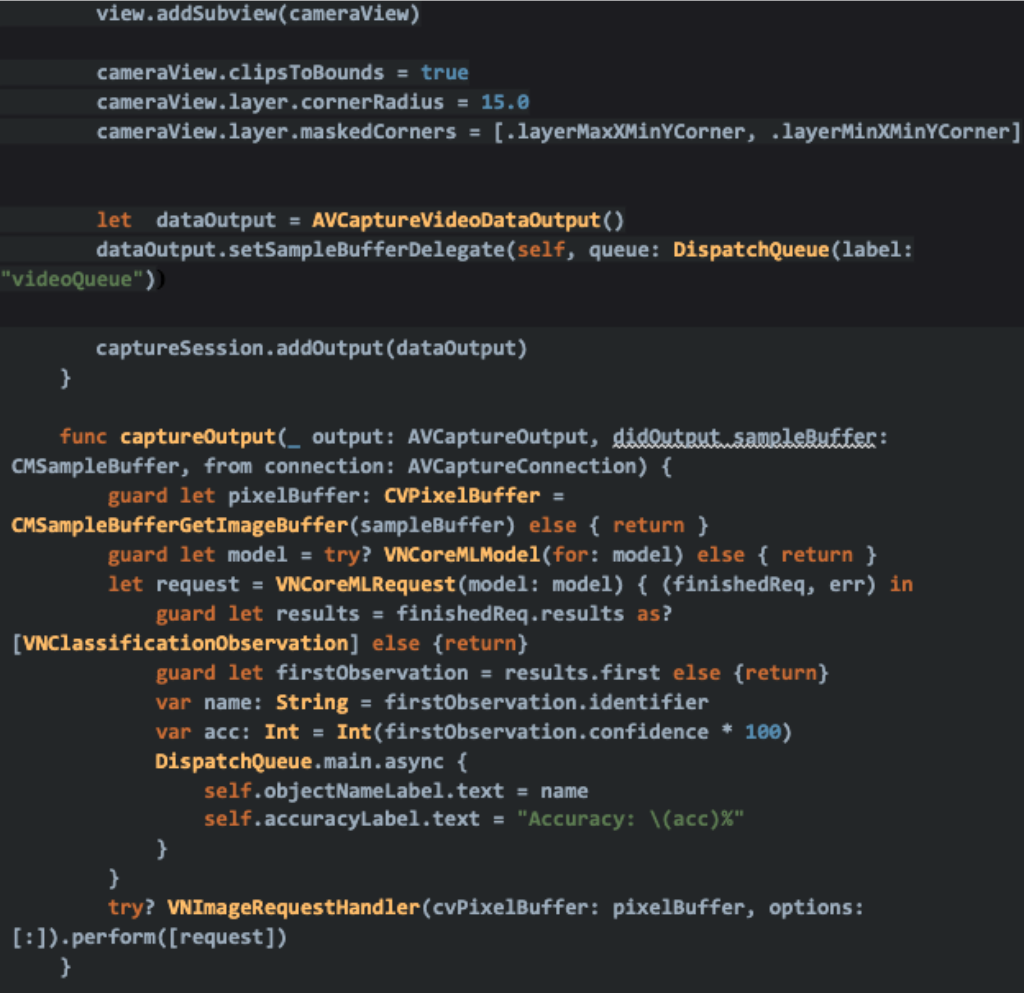
Benefits of Machine Learning Swift
Implementing Machine Learning Swift in AI projects offers numerous advantages, accelerating development and improving outcomes:
1. Efficiency and Speed
The integration of Swift with machine learning frameworks allows for rapid development of machine learning models, reducing the time required for implementation.
Swift’s straightforward syntax and powerful libraries simplify complex ML concepts, enabling developers to write clean and concise code, thereby increasing efficiency and reducing development timeframes.
2. Accessibility
Swift’s user-friendly and approachable nature makes it accessible to both experienced programmers and beginners venturing into AI and ML.
Its natural language-like syntax and clear conventions make it easier to understand and collaborate on projects, expanding the realm of AI development to a larger community of developers.
3. Compatibility
Machine Learning Swift seamlessly integrates with existing Swift codebases and frameworks, allowing developers to enhance their iOS apps with machine learning capabilities.
This compatibility eliminates the need for developers to transition to a different programming language, saving time and effort while maintaining code integrity.
Conclusion
As machine learning and artificial intelligence evolve, the merger of these technologies with the versatile programming language Swift opens up countless possibilities. Machine Learning Swift has emerged as a game-changer, benefiting industries such as healthcare, finance, and retail. With its simplicity, efficiency, and compatibility, ML Swift enables developers to explore the frontiers of intelligent application development like never before. So brace yourself, as the future is here, and Machine Learning Swift is at the forefront of this transformative journey.
